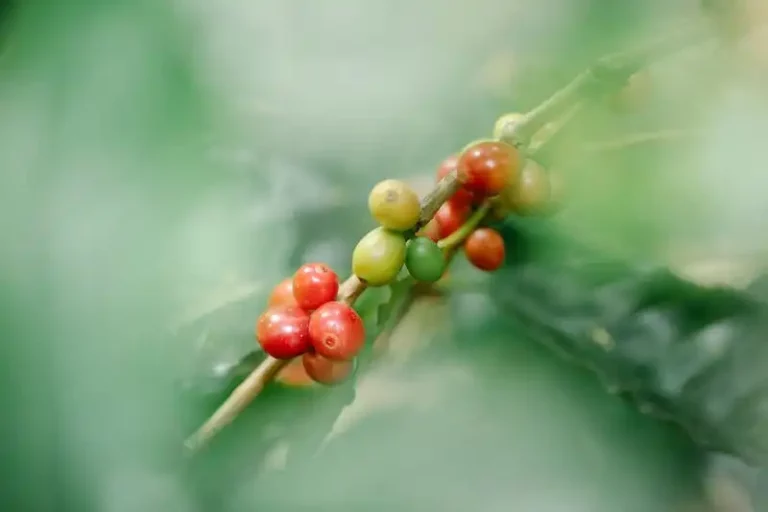Cuban Oregano, scientifically known as Plectranthus amboinicus, is an aromatic herbaceous plant that belongs to the mint family, Lamiaceae. It is native to eastern Africa and the Indian Ocean region, including India and the Philippines. This herb is also commonly known as Mexican Mint, Indian Borage, or Vicks Plant due to its strong scent reminiscent of the popular Vicks VapoRub.
One of the unique features of Cuban Oregano is its succulent-like leaves, which are rounded, grayish-green in color, and can grow up to 2 inches in length. The leaves of this herb have a velvety texture and are covered with fine hairs. The stems of Cuban Oregano are woody and somewhat tubular in form, while the flowers are small and tubular, ranging in color from white to lavender.
Cuban Oregano is considered a frost-tender plant and is best grown in well-drained soils under full sun or partial shade. Although it can tolerate a wide range of conditions, it thrives in warm and humid climates. It is often used in cooking to add flavor to various dishes, including soups, stews, and meat marinades. Moreover, its leaves can be harvested and used fresh or dried as a flavoring agent in many dishes.
Gardeners can easily grow Cuban Oregano in their gardens using transplants or seeds. The plant can reach a height of 2-3 feet, making it an attractive addition to any garden. It is a low-maintenance plant that requires minimal irrigation, making it suitable for both novice and experienced gardeners.
Cuban Oregano is known for its medicinal properties as well. The leaves of this herb have been used for centuries in traditional medicine to treat various ailments such as cough, cold, congestion, and even constipation. In addition, the essential oils derived from Cuban Oregano have antimicrobial and antifungal properties, which make them useful ingredients in natural remedies.
Whether you are a seasoned gardener or a cooking enthusiast, Cuban Oregano is a lovely herb to have in your garden. Its aromatic leaves and unique flavors can enhance the taste of your favorite dishes, while its medicinal properties offer natural remedies for common ailments. So why not give Cuban Oregano a try? You won’t be disappointed!
How to grow Cuban oregano
Cuban oregano, also known as “Vicks plant” or “Mexican mint,” is a lovely member of the oregano family. Despite its names, Cuban oregano doesn’t belong to the mint family. This herbaceous plant is often used in cooking, adding a distinct flavor to stews and Greek dishes.
When it comes to growing Cuban oregano, it can thrive in a variety of conditions. However, it is important to note that this plant prefers well-draining soil and doesn’t tolerate waterlogged conditions. It can be grown from seeds or stem cuttings.
To grow Cuban oregano from seeds, start by planting them in a seed tray or small pots filled with moist, organic-rich soil. Keep the soil consistently moist but not waterlogged. Place the tray or pots in a warm area with indirect sunlight, such as a greenhouse or a sunny window. Within a couple of weeks, you should see the seeds germinate.
If you prefer to propagate Cuban oregano from stem cuttings, take several sets of young, healthy stems from a mature plant. Remove any foliage from the bottom half of the stem and dip the cut ends in a rooting hormone. Plant the cuttings in moist soil, burying them about an inch deep. Mist the cuttings regularly to maintain humidity and promote root development.
Caring for Cuban oregano is relatively simple. Water the plants regularly, but avoid overwatering. Allow the top inch of soil to dry out between watering, as Cuban oregano prefers slightly dry conditions. Fertilize the plants with a balanced organic fertilizer once a month during the growing season.
Cuban oregano is a perennial plant that can be overwintered in colder climates. In zones where the temperatures drop below freezing, it is recommended to grow Cuban oregano in containers. This allows for easy transport indoors during the winter. Place the containers in a sunny window or under grow lights to ensure sufficient light for the plants.
Harvesting Cuban oregano leaves is simple. You can start harvesting the leaves once the plant has become established and is actively growing. Simply pinch or snip off the desired amount of leaves from the stems. The leaves can be used fresh or dried for later use in cooking or making herbal teas.
Although Cuban oregano shares some similarities with other oreganos in terms of flavor and culinary use, it has its own unique characteristics. The rounded, fuzzy leaves of Cuban oregano give off a pleasant fragrance with hints of mint and citrus. This makes it a versatile herb that can be used in a variety of recipes.
In addition to being a culinary delight, Cuban oregano also attracts pollinators to your garden with its vibrant foliage and aromatic flowers. Its woody stems and fuzzy leaves give it a distinctive presence in herb gardens or mixed borders. Whether you’re an experienced gardener or a beginner, Cuban oregano is a rewarding plant to grow.
What is Cuban oregano
Cuban oregano, also known as Mexican mint or Spanish thyme, is an aromatic herbaceous plant that is a member of the mint family (Lamiaceae) and a division of the genus Plectranthus. It is native to India and the Philippines, but can now be found in many tropical regions around the world.
Cuban oregano has thick, fleshy leaves that are grayish-green in color and have a slightly rounded shape. The foliage is often covered in fine white hairs, giving it a velvety texture. The leaves are highly fragrant and release a strong aroma when crushed or torn. The scent is a combination of oreganos and lemon, making it a popular addition to many culinary dishes.
With its robust flavor and aroma, Cuban oregano is a versatile herb that can be used in a variety of dishes. It can be added to soups, stews, and marinades to enhance the flavors. It can also be used as a garnish or added to salads for a little extra kick. Cuban oregano pairs well with ingredients like tomatoes, garlic, and onions, adding a unique and flavorful twist to your dishes.
In addition to its culinary uses, Cuban oregano is also known for its various health benefits. It is believed to have properties that can aid digestion, relieve constipation, and even promote healthy skin. Some people also use Cuban oregano as a natural insect repellent.
Cuban oregano is a relatively easy plant to care for and can thrive in a variety of conditions. It prefers well-draining soil and should be watered regularly, but not excessively. It is also important to provide the plant with plenty of sunlight and occasional misting to keep the foliage looking fresh. Cuban oregano can grow up to 2 or 3 feet tall and can be propagated through stem cuttings.
In conclusion, Cuban oregano is an aromatic herbaceous plant that is a member of the mint family. It has thick, fleshy leaves with a grayish-green color and a rounded shape. With its strong aroma and robust flavor, Cuban oregano is a versatile herb that can be used in a variety of dishes. It also offers various health benefits and is relatively easy to care for, making it a popular choice for both culinary and gardening enthusiasts.
How does Cuban oregano differ from other oreganos
Cuban oregano, also known as Plectranthus amboinicus, is a member of the mint family and is native to the Eastern Mediterranean region. Although it is named “Cuban oregano,” it is not actually an oregano, but rather a different species altogether. Here are some key differences between Cuban oregano and other oreganos:
- Leaves: Cuban oregano has large, succulent leaves that are thick and fuzzy, similar to that of the coleus plant. This sets it apart from most other oregano varieties, which have smaller, thinner leaves.
- Growth: Cuban oregano can grow up to 2 feet in height, whereas most other oregano varieties only reach about 6-12 inches in height.
- Watering: Cuban oregano requires more frequent watering compared to other oreganos. It prefers moist, well-drained soils and thrives in gardens with regular irrigation.
- Cultivation: Cuban oregano is easy to grow and can be propagated from stem cuttings or transplants. It is well-suited for container gardening and can be grown both indoors and outdoors.
- Flavors: While Cuban oregano shares some similar aromatic flavors with other oreganos, it has a unique taste that sets it apart. It has a stronger flavor profile, with hints of mint, thyme, and citrus.
Overall, Cuban oregano is a versatile herb that can be used in a variety of culinary dishes. It doesn’t just serve as a delicious addition to recipes, but also has several medicinal and ornamental uses. With its distinct appearance and flavors, Cuban oregano can add a special touch to your garden or landscape.
The Best Growing Conditions
Cuban Oregano, also known as Mexican Mint or Vicks Plant, is an herbaceous plant that is native to India and the Philippines. It is a woody plant with grayish-green foliage and has a pleasing aromatic scent. The leaves are rounded in shape and can grow up to several inches in length.
When it comes to growing Cuban Oregano, it is important to provide the plant with the best conditions to ensure healthy growth. Here are the key factors to consider:
| Light: | Cuban Oregano prefers bright, indirect sunlight. It can tolerate partial shade, but too much shade may result in leggy growth. |
| Temperature: | The plant thrives in warm temperatures ranging from 70 to 90 degrees Fahrenheit. It can also tolerate cooler temperatures, but anything below 55 degrees Fahrenheit may slow down growth. |
| Watering: | Cuban Oregano requires moderate watering. The soil should be kept moist but not waterlogged. Water when the top inch of soil feels dry. Avoid overwatering as it can lead to root rot. |
| Soil: | Well-draining soil is essential for the healthy growth of Cuban Oregano. A mix of organic compost and potting soil works well. The soil pH should be slightly acidic to neutral (around 6.0 to 7.0). |
| Fertilizer: | Feed the plant with a balanced fertilizer once a month during the growing season. Avoid over-fertilization, as excessive nutrients can lead to weak and leggy growth. |
| Propagation: | Cuban Oregano can be propagated from stem cuttings or by division. Take 3-4 inch cuttings from healthy plants and root them in a well-draining potting mix. Division can be done by separating the plant into smaller sections, each with its own roots. |
| Harvesting: | The leaves of Cuban Oregano can be harvested at any time, but for the best flavor, it is recommended to harvest them before the plant flowers. The leaves can be used fresh or dried for later use in culinary preparations. |
Cuban Oregano is a versatile herb that can be used in a variety of dishes. It adds a unique and somewhat stronger flavor compared to other oreganos. It is commonly used in Mexican and Filipino cuisine and pairs well with meats, stews, and vegetable dishes. Additionally, Cuban Oregano has medicinal properties and is believed to help with constipation.
Overall, caring for Cuban Oregano is relatively easy, and it is a rewarding plant to grow in your garden. With the right conditions and proper care, you can enjoy the aromatic foliage and flavorful leaves of this herbaceous plant.




